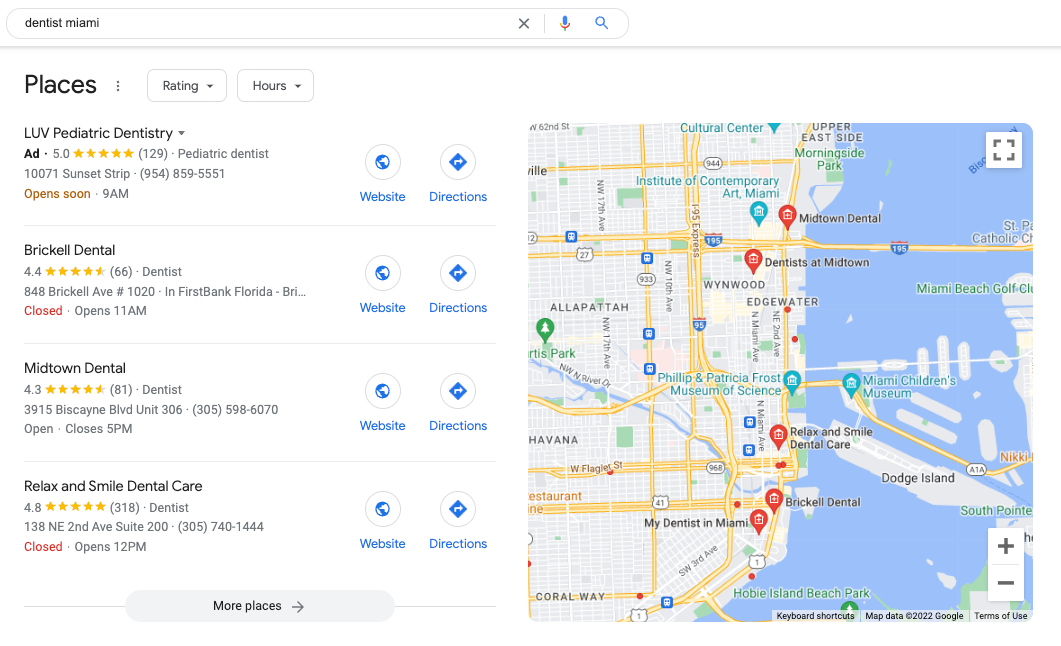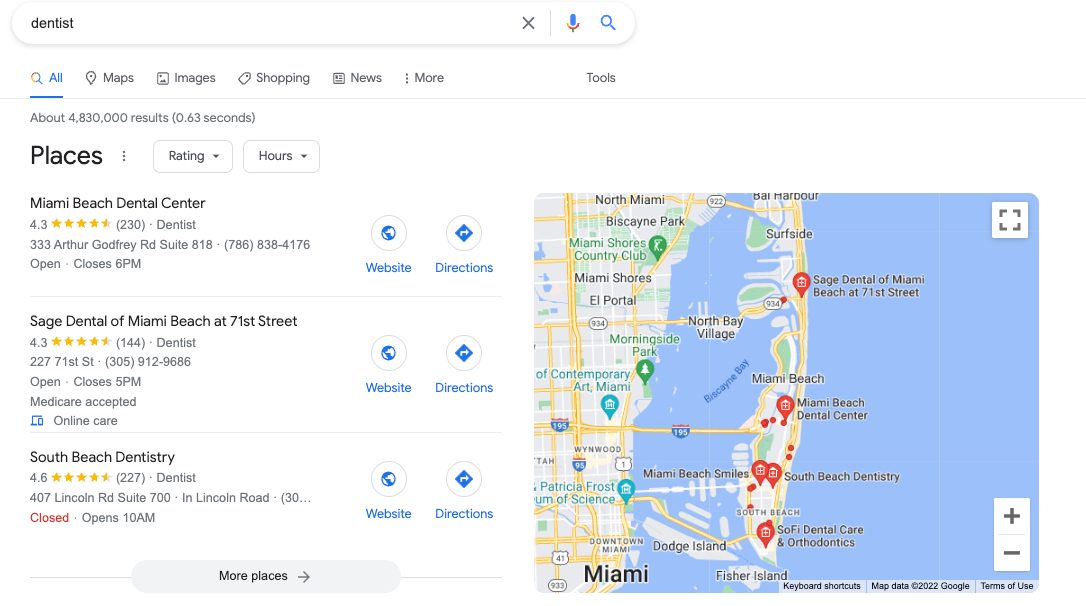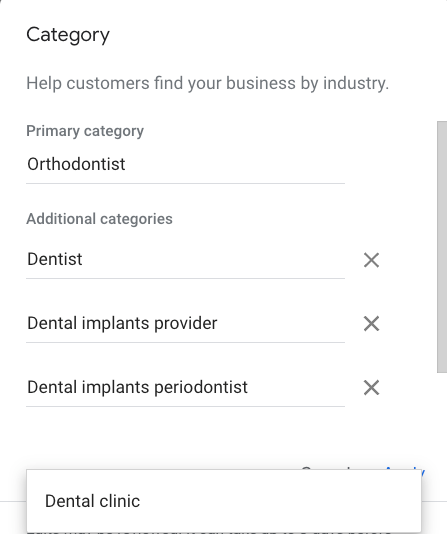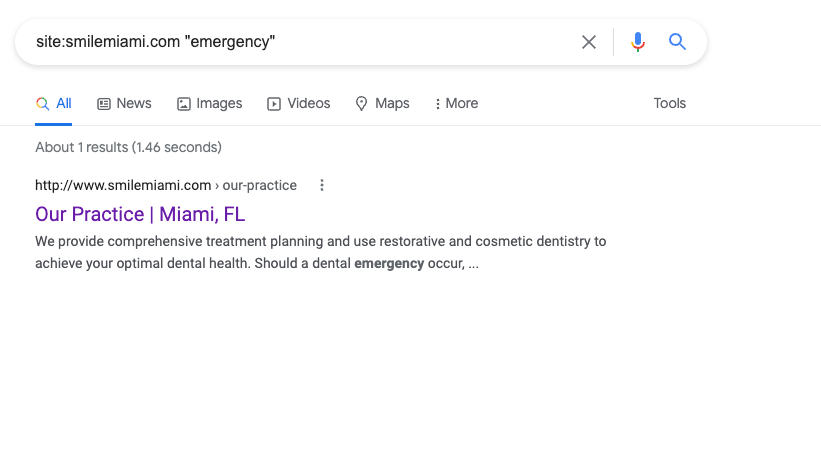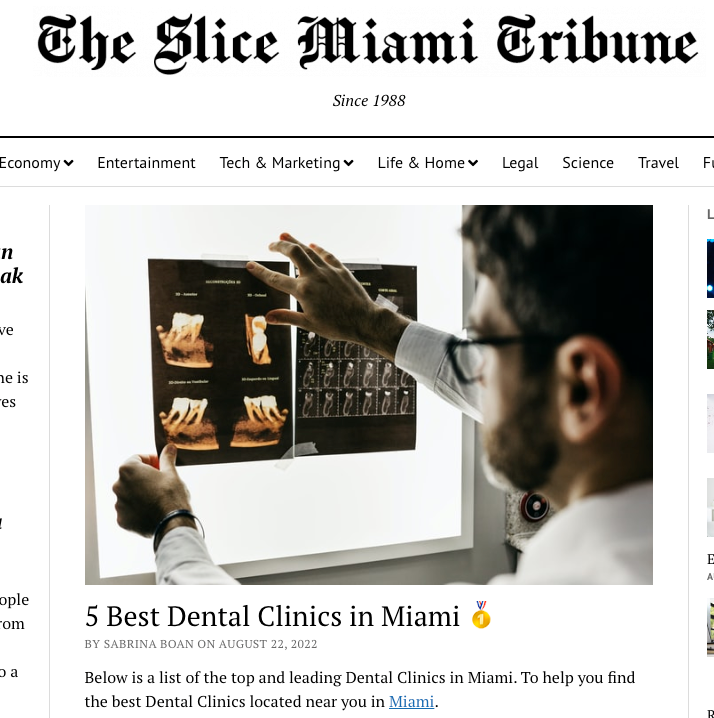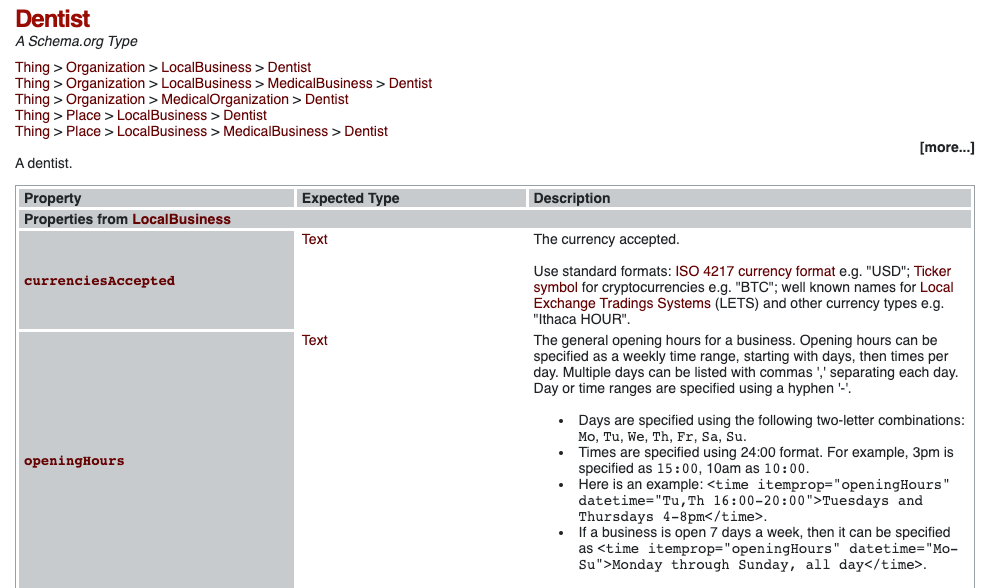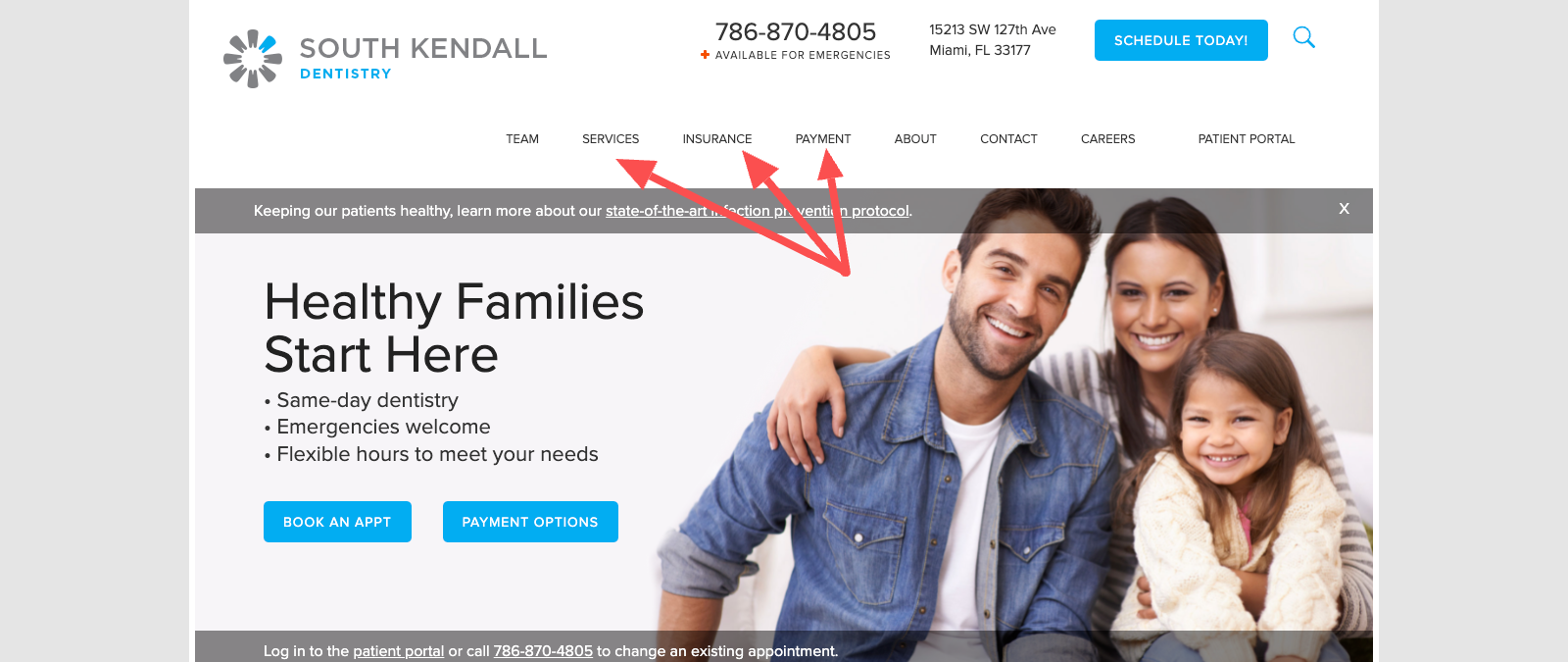Table of Contents
If you’re a dental practice looking to improve your SEO, there are many different factors to consider. Fortunately, at Go Fish Digital, we’ve been able to advise on SEO strategies for dental providers in the past. As a result, this has given us some good insights into what moves the needle for dental practitioners. In general dentist SEO campaigns involve researching and tracking your site’s core keywords, improving your local SEO initiatives, creating strong landing pages, and much more.
Related Content:
Related Article:
Below you can find our playbook for how to improve the SEO of dental websites.
1. Research Your Dental SEO Keywords
When starting your dental SEO campaign, the first step that you’ll want to take is to perform keyword research for your business. Keyword research is simply the process of identifying the keywords that your potential clients could be searching for when looking for services that you offer. For example, a dentist in Miami, FL the following keywords may be important to their business:
- miami dentist
- dentist in miami
- family dentist miami
- teeth whitening services miami
- cosmetic dentistry miami
You must be identifying the most important keywords that users could be searching to find your dental practice. You’ll want to inventory all the different services that you offer to perform research to see if users are searching for terms around them. To find these terms, there are several different tools that you can use:
- Google Search Console
- Google Keyword Planner
- Moz Keyword Explorer (Paid)
- Ahrefs Keyword Explorer (Paid)
The most important one to start with is your Google Search Console account. Once logged in, you can navigate to the “Performance” report. Here you should be able to see data on the actual search terms that users queried to find your dental practice.
Manually review search terms that you think align with your core service offerings and add them to a spreadsheet. After you’ve collected all the relevant ones you can find, consider using the other tools above for additional research. Keep adding terms to your spreadsheet until you believe the list accurately reflects the majority of your service offerings.
2. Track Your Keywords
Once your keyword research list is complete, you’ll want to be sure that you’re tracking your keywords. Keyword tracking is software that monitors where your keywords are ranking in the search results. For instance, our Miami dentist could track the term “dentist miami” and see that she ranks in the #3 position.
By utilizing keyword tracking, your business can accomplish two different goals:
- Monitor ranking positions for individual search terms
- Review aggregated rankings to understand the overall SEO health of your site
For individual keyword rankings, this can give you insights on specific pages to optimize. For example, if you see that our rankings have dropped for “miami teeth whitening” over time, then you can prioritize changes to that specific page.
The other advantage of tracking keywords is getting a pulse on overall SEO health. Most keyword rank tools will show you how you’re performing across all keywords over time. This data can give you insights into how your site is trending. Are overall rankings improving, staying the same, or declining?
These insights can be valuable to help you understand the overall direction of your dental practice’s SEO. If you see that things are improving, you’ll know that your current strategy and initiatives are on a good path. If not, you might want to consider reevaluating the actions you’re taking to improve things.
To track keywords, you’ll need some type of software to do so. Most solutions are paid but many have reasonable costs and small business plans. Below you can find some of the most popular choices for keyword tracking:
3. Improve Local SEO For Your Dentistry
Now that you’ve researched and are tracking your core keywords, it’s time to start making changes to improve your visibility in the search engines. The very first step that you’ll want to take is your practice’s “local SEO” presence.
When users are looking for a product or service that they can get in a specific geographic area, local SEO becomes a major factor. Generally, the most prominent part of local SEO is the “map pack results”. These are results that appear that contain the names, addresses, phone numbers, and map listings of local businesses. Here you can see a map pack result for “dentist miami”.
Of course, because we specified the exact location that we were looking in, Google is showing us businesses in that area. However, Google will often show local results, even when the location isn’t specified. For instance, a user in Miami Beach might see search results like this when just querying the term “dentist”.
This is because even though we didn’t specify a location, Google implicitly understands that we’re looking for a local business. Therefore, it shows local businesses in the search results by default. This means that your site could be capable of ranking well for broad search terms such as “dentist” or “dentist near me”.
To improve your visibility in these results, you’ll want to take action to optimize your Google Business profile.
Google Business Profile Optimization
For anything to be eligible to rank in the map packs, you’ll need:
- A Google Business profile
- Proper categories set
- Proximity near the location you want to rank
If you haven’t claimed your Google Business profile, you’ll want to take that step immediately. Fortunately, Google has provided documentation that makes this a fairly straightforward process.
- Navigate to Google Maps
- Search for your business name
- Choose “Claim this business” and follow the steps
By claiming your business, you’ll now be able to directly make edits to your Google Business profile. This will allow you to control important information such as your name, address, and hours of operation. Be sure to review all of these elements to ensure their accuracy. It’s very common to see issues such as incorrect business hours. Inaccurate information like this could lead to frustrated patients or even lost business opportunities.
The next step that you’ll want to take is to set proper Google Business categories. If you don’t have categories that line up with the keywords users are searching for, your business won’t be able to appear in the local SEO results. It’s imperative that you fill out these categories as comprehensively as you possibly can.
For example, here are categories for an Orthodontist that also offers dental and implant services.
While the categories you choose will depend on your specific business, below are some good options for dental providers to consider choosing from:
- Dentist
- Cosmetic dentist
- Pediatric dentist
- Dental implants provider
- Dental clinic
- Orthodontist
- Dental hygienist
- Emergency dental service
By claiming your Google Business profile and optimizing your categories, your business will be in a much better position to perform well in the local results. Now you can consider more advanced local SEO tactics such as improving citations, local backlinks, and generating business reviews.
4. Create Dental Practice Area Landing Pages For SEO
Your dental practice likely has multiple different services. Different services might include dental implants, teeth whitening, same-day services, etc. A dental SEO initiative that you’ll want to check early on is that you have landing pages created for each service that you offer. This is important for several reasons:
- Customers can read specific information about exactly what your practice provides for each service
- Search engines will be able to rank those pages for keywords users search around them. A user searching for “emergency dental services” might see your “Same Day” page rank in Google as opposed to your home page
For example, this site appears to offer emergency services but it does not have a dedicated “Emergency” page created on their site.
This could be a missed opportunity as creating this page could help their site improve visibility for terms such as “emergency dentist Miami”. This is likely a very high intent search.
Below you can see examples of services that you would want to create a dedicated landing page on your site:
- Teeth Whiting
- Dental Implants
- Bridges
- Veneers
- Bonding
- Dentures
- Invisalign
You’ll want to be sure that most services you offer have a mapped landing page that talks about them in-depth. If you’re unsure of which pages to create, consider reviewing competitor websites to see what types of pages they have created.
5. Build Local Backlinks
One of the most important components of SEO is building links to your site. Links from other sites act as “votes of confidence” that your domain contains quality material and is worth referencing. Broadly speaking, the more links you have pointing to your site from trusted sources, the easier it will be for your site to rank well in the search engines.
For local sites, a great way to get started with this initiative is to find local sources of influence and identify ways to build backlinks. In the vast majority of communities, there are local newspapers, clubs, charities, food blogs, businesses, and other organizations that would make for good opportunities.
There are a few benefits of going after local links specifically. Generally, they’ll be easier to acquire. You’ll most likely be dealing with smaller organizations where it is easier to get in touch with the person who runs the website. As well, your ties to the local community will make your partnership a more natural fit. Local links can also be an important step in showing search engines that your site is relevant to a particular geographic area.
Going back to our Miami example, it looks like a local publication runs a “Best Dentists” list that ranks the top practices in the area. This could be a great opportunity to get a relevant local link and help drive customers directly from the article.
Local sponsorships can also be another great path to go. Plenty of events and organizations would take sponsors from local businesses. For example, this dental practice is sponsoring a local board game event on Meetup.com. In return, they’re getting a link back.
There are many different places where you can look for local links. Some of the best include:
- Events
- Partner businesses
- Meetups
- Clubs
- Charities
If you’re looking to go deeper here, this is a great guide from Moz that will give you very actionable advice on how to build links in your local area by using events.
6. Use Dentist Structured Data
A great way to improve Google’s understanding of your site is to utilize structured data. Structured data is code that can be placed on a particular page to improve Google’s understanding of what the content is about. While Google is very adept at understanding a page’s contents, this can give the search engine an additional layer of confidence.
While there are many different schema types, the most relevant one for dental practices is “Dentist” structured data.
Within the “Dentist” schema, you can tell Google very specific things about your practice. You can provide Google with information such as:
- Business name (name)
- Phone number (telephone)
- Address (address)
- Hours of operation (openingHours)
- Social media profiles (sameAs)
- Google Maps link (hasMap)
Below is an example of structured data that you could use on your site.
<script type="application/ld+json"> { "@context": "https://schema.org", "@type": "Dentist", "name": "Your Name", "image": "www.exampleimage.jpg", "@id": "", "url": "www.example.com", "telephone": "111-111-1111", "address": { "@type": "PostalAddress", "streetAddress": "10 Maple Drive", "addressLocality": "Miami", "addressRegion": "FL", "postalCode": "33101", "addressCountry": "US" } } </script>
Generally, structured data is best implemented by a developer. If you worked with one to create your site, consider asking them to add this structured data to your home page. If you’re more technical, you could generate a custom one using the Schema Generator and add it to the site via the template or a tool like Google Tag Manager.
7. Review The UX Of Your Dentistry Site
Another great review that can significantly impact your dental SEO performance is reviewing the overall user experience of your site. By and large, Google wants to rank sites that make it easy for the user to find the exact content that they’re looking for. You’ll want to review your website and look for any opportunities to make your site easier and help get users to the information they want.
While many different factors go into a site’s user experience, here are some elements that you should ensure your site has:
- Clear calls to action
- Pages that inform key decision-making factors (insurance, payment)
- Landing pages for specific dental services
- A fast website experience
- Straightforward navigation paths
- Strong imagery that captures the value proposition of the page
- A clean design that allows for a readable website
- Internal search functionality
For example, when we navigate to this site’s home page we can see that there are two obvious calls to action presented to the user. In the above-the-fold content, you’re immediately provided options to either get more information on “Financing” or “Membership”. This makes it very clear what the next steps are for the user.
This is another good example of a site UX that provides users with a strong user experience. Directly in the site navigation, they outline important pages that users will want to interact with before making a decision. Here they can see what services are offered, insurances accepted, and payment options.
By clearly outlining these critical pages, it makes it easier for users to discover the information and make a decision on whether or not this dental provider is the best for their personal needs.
Dental SEO Conclusion
There are a lot of opportunities to improve your dental site’s search visibility. By understanding core principles such as your site’s keywords, local SEO and UX best practices, you’ll put your site in a much better position to perform well in the search engines. While dentist SEO can be a longer-term play, the results can definitely be worth it as your site can more consistently generate traffic and new patients.
Search News Straight To Your Inbox
*Required
Join thousands of marketers to get the best search news in under 5 minutes. Get resources, tips and more with The Splash newsletter:

